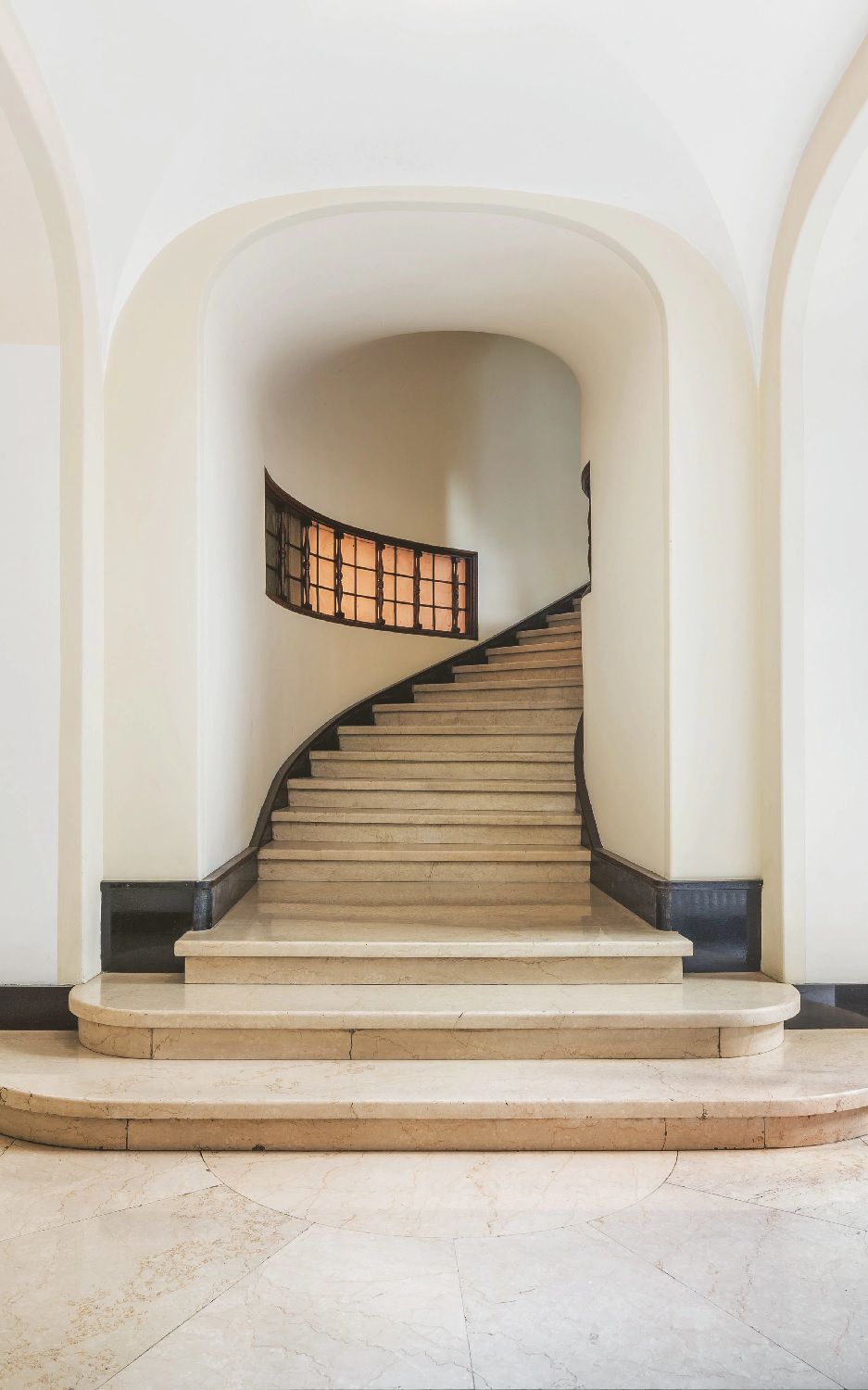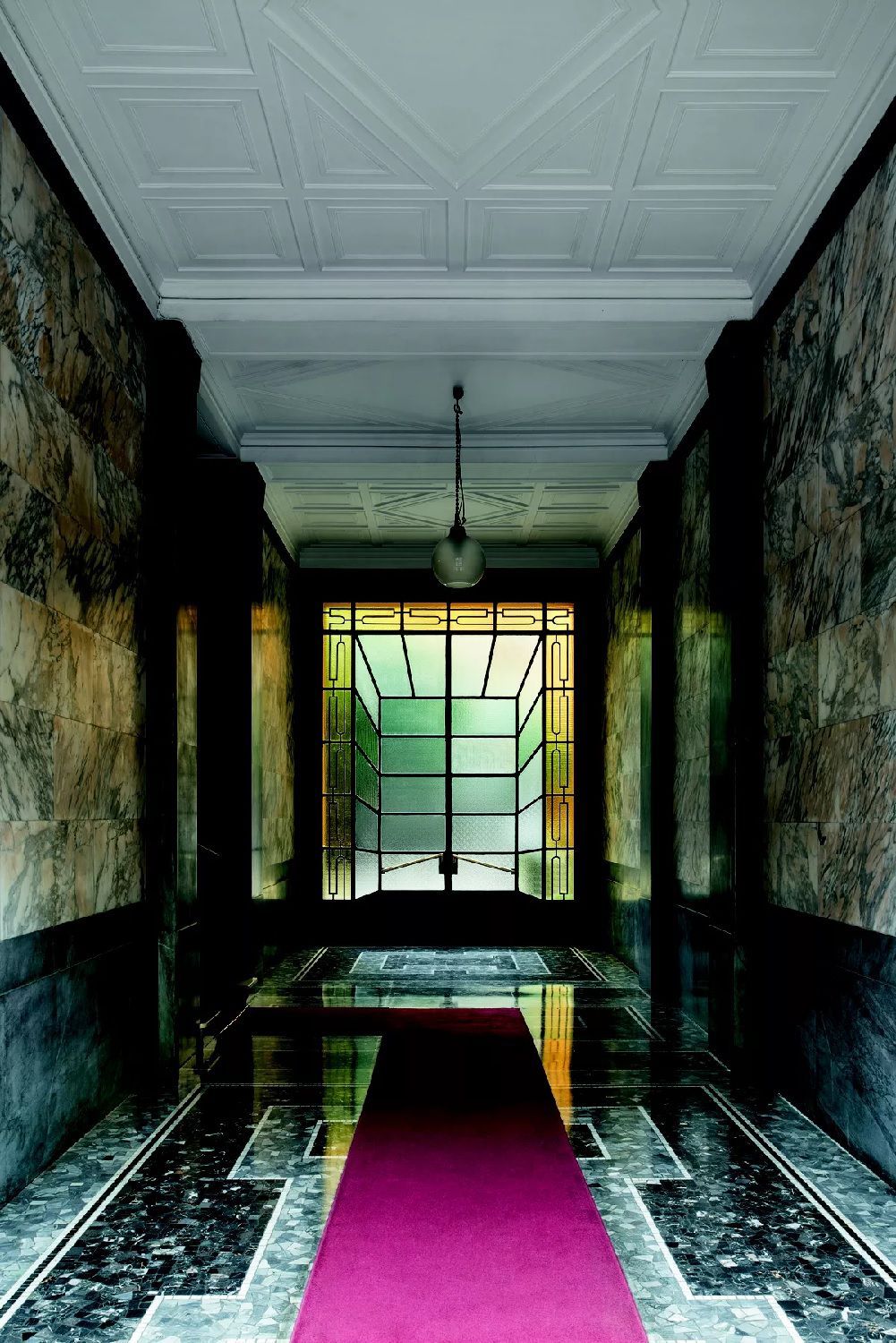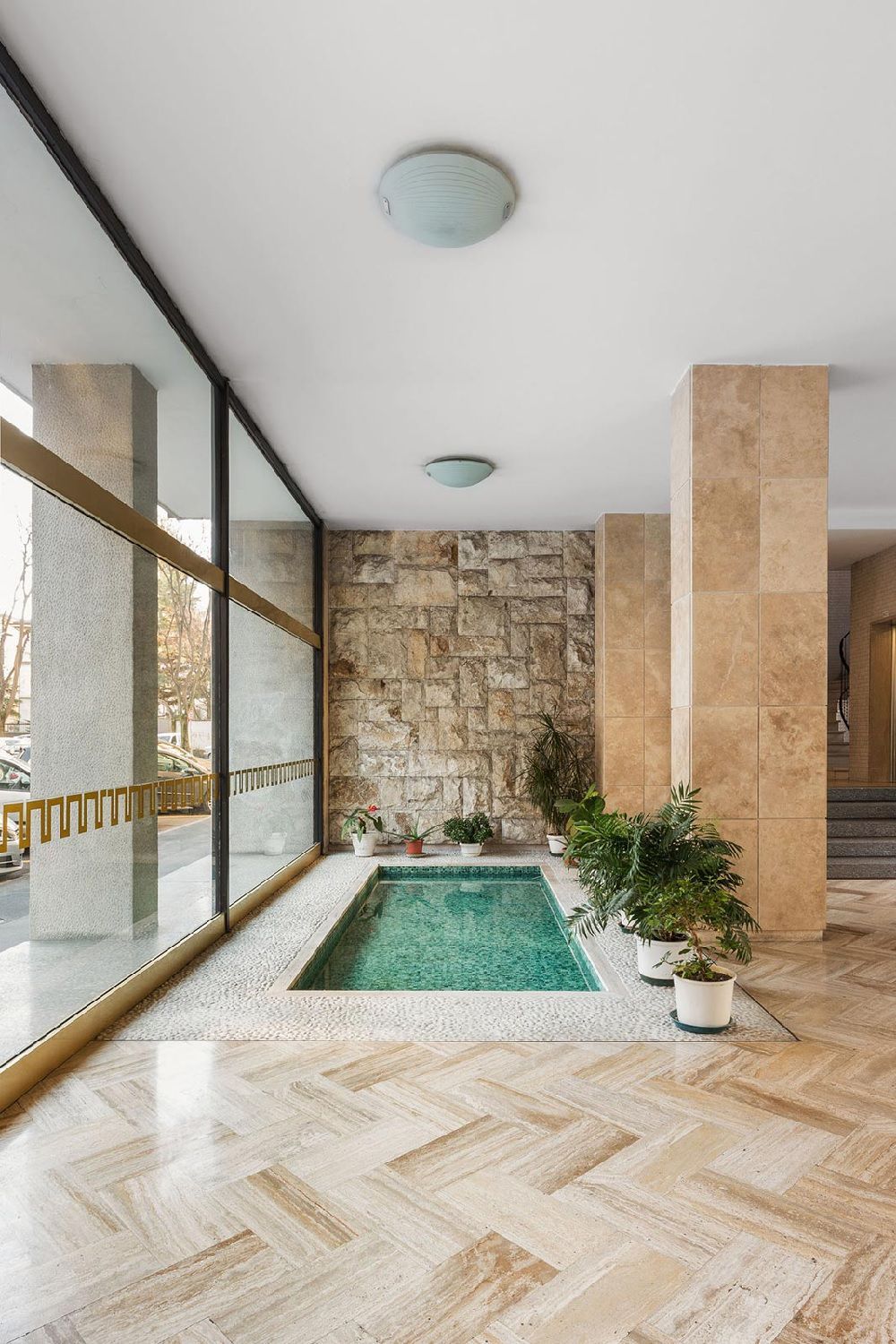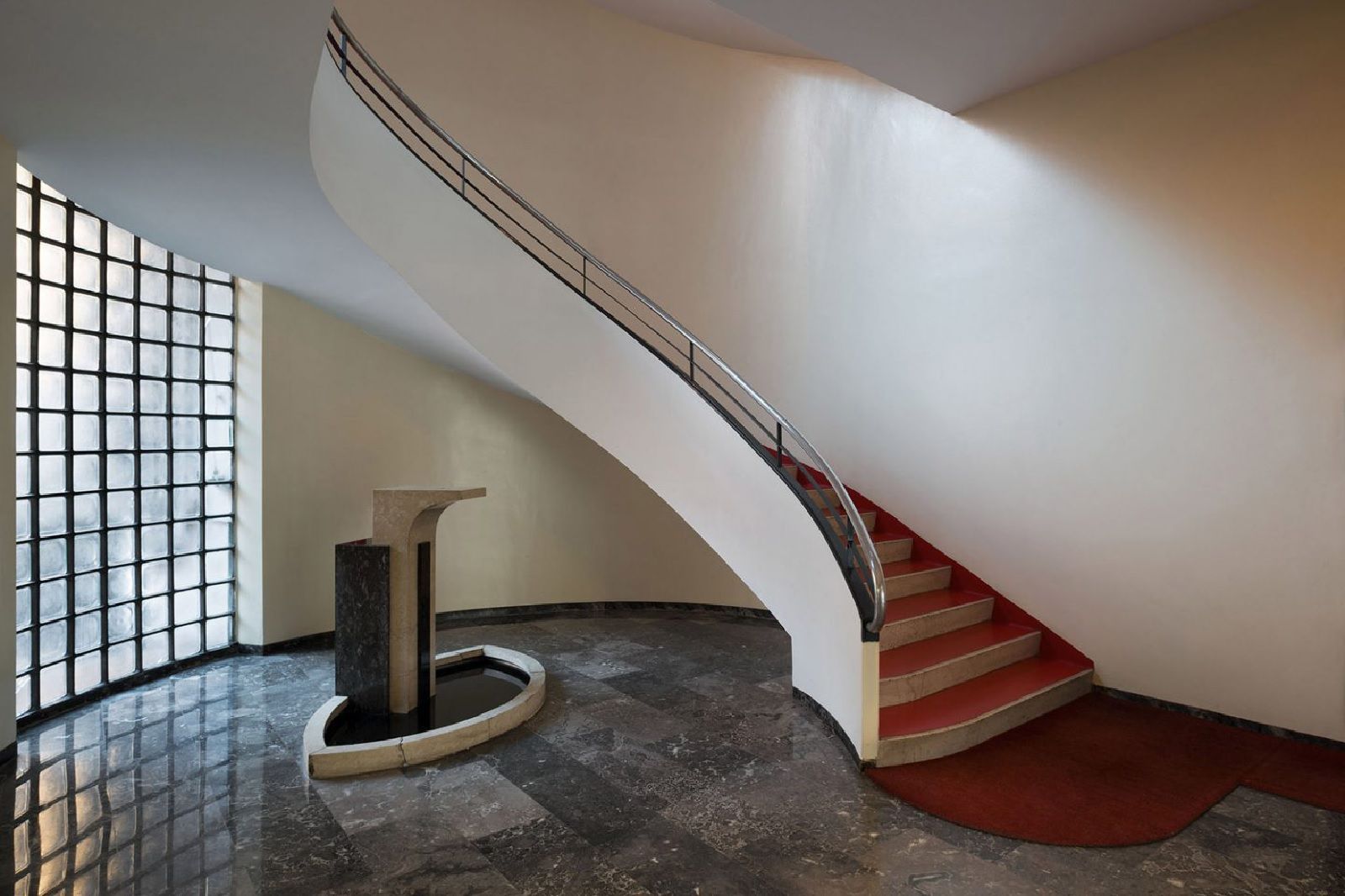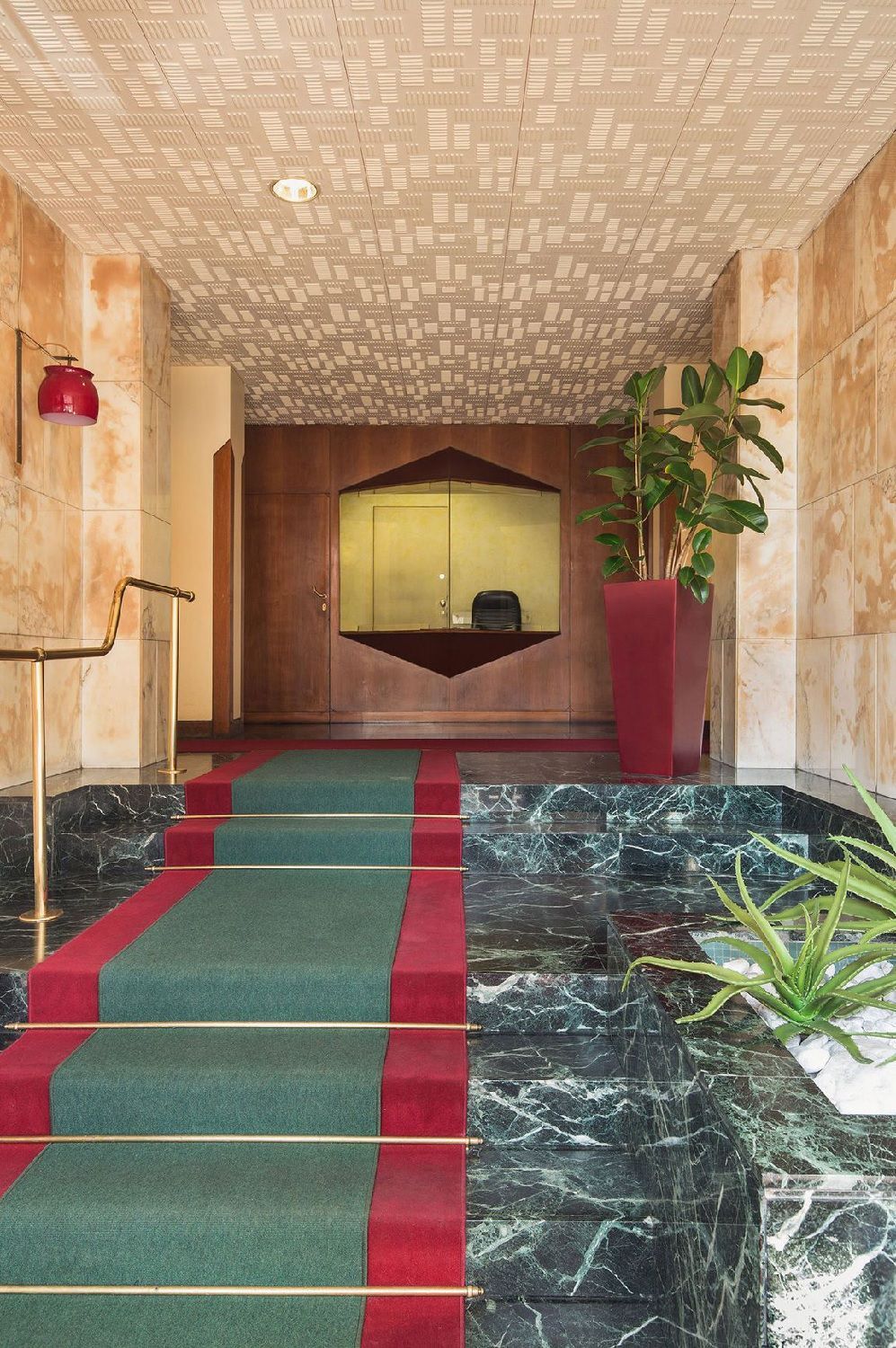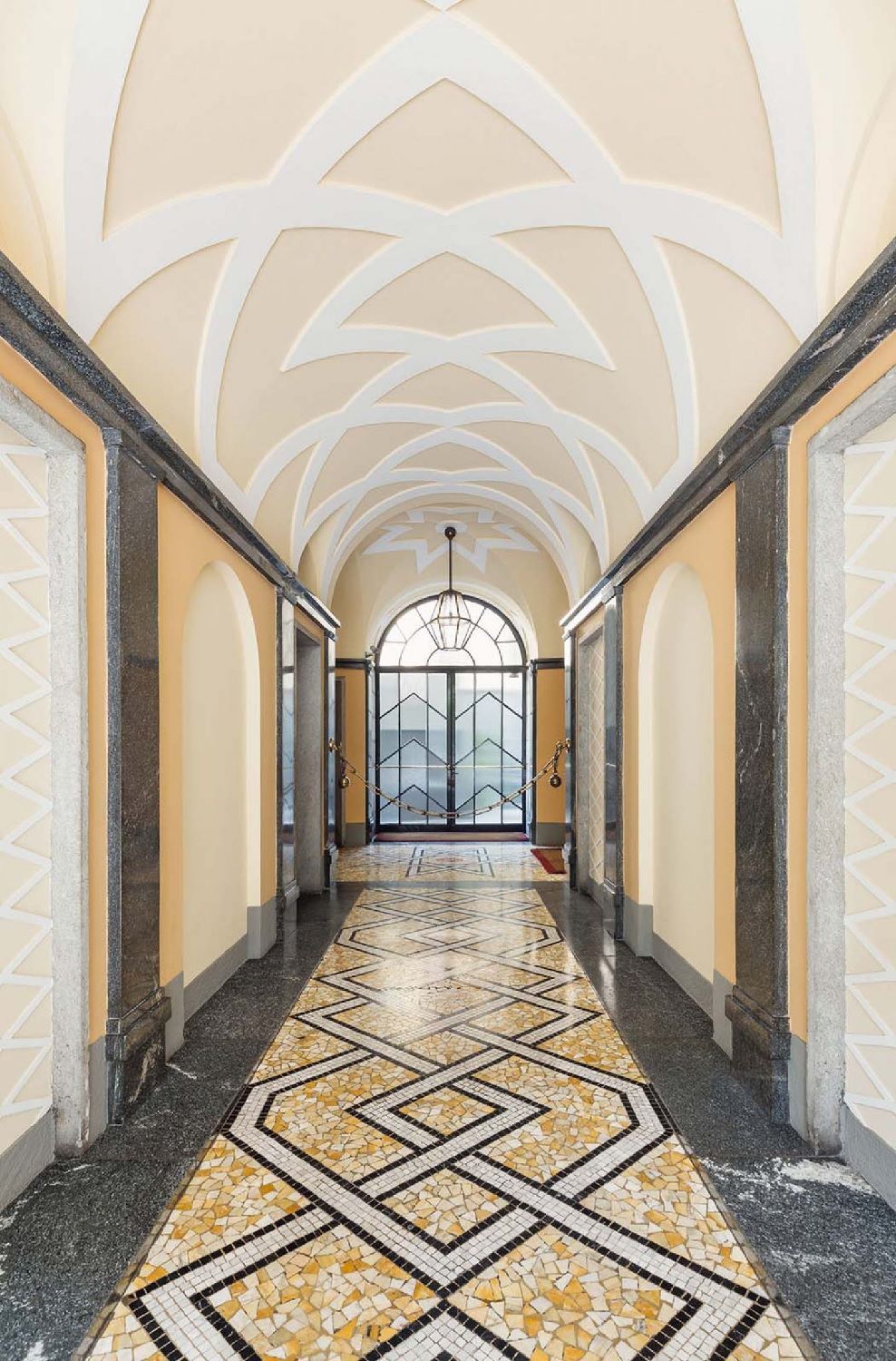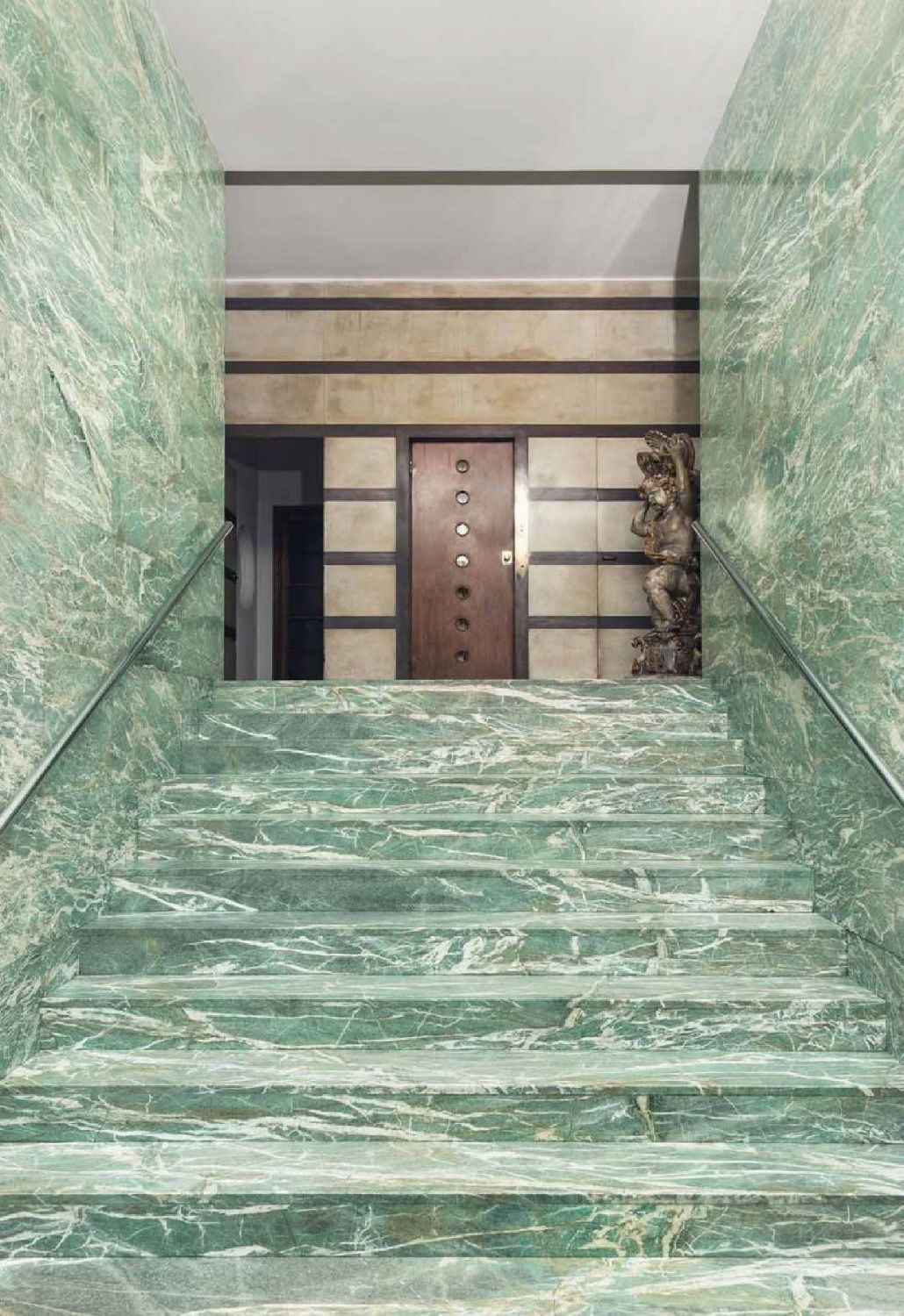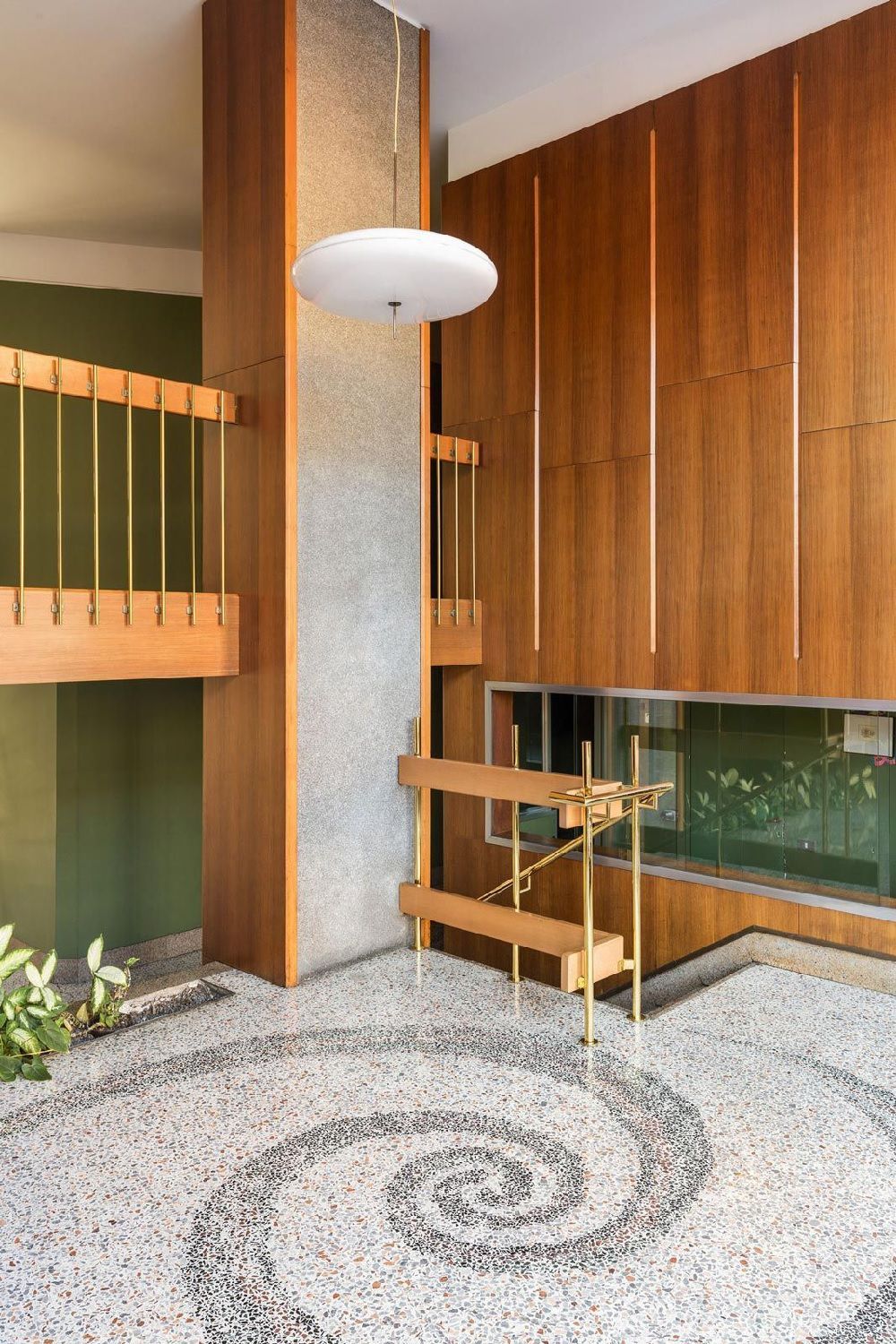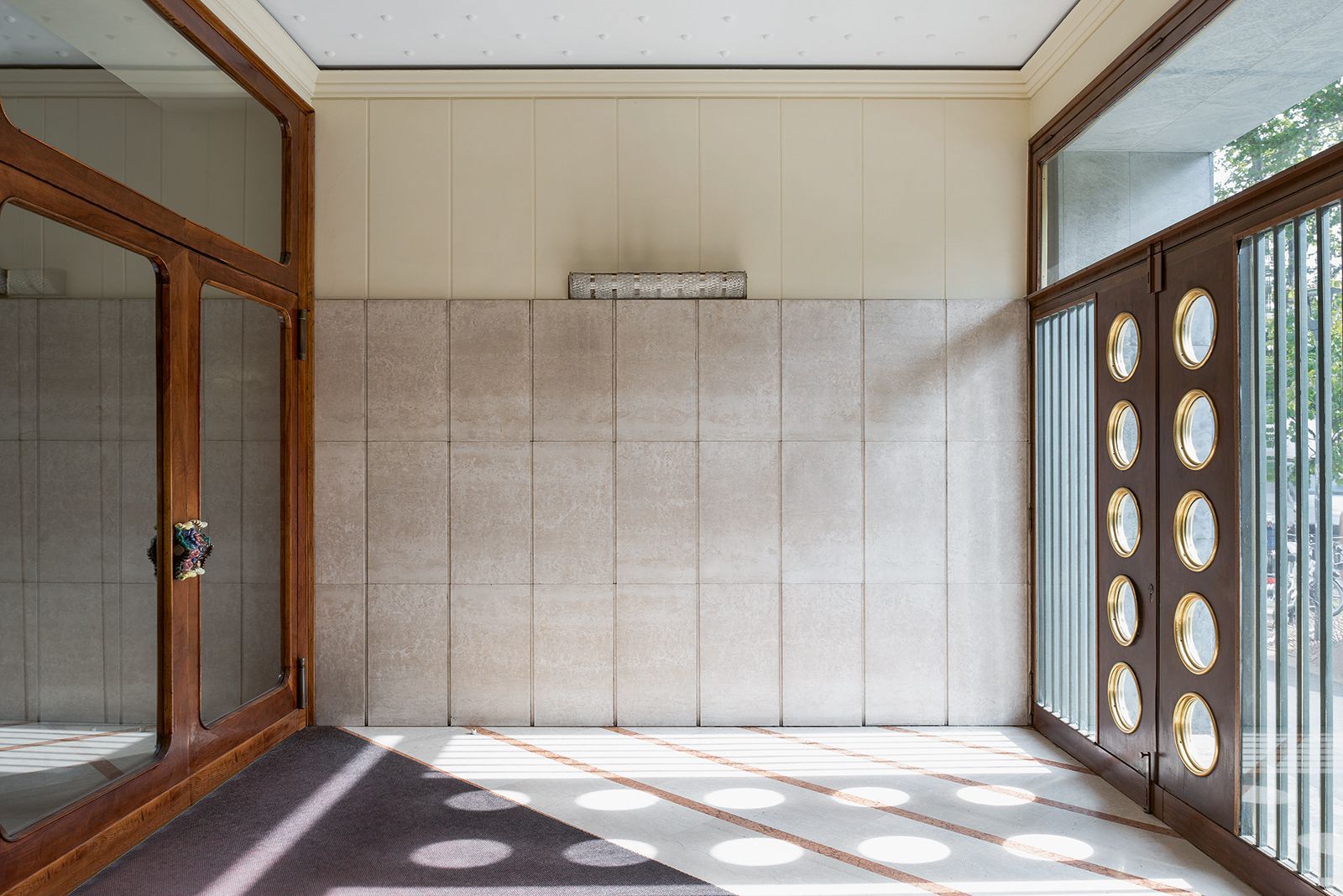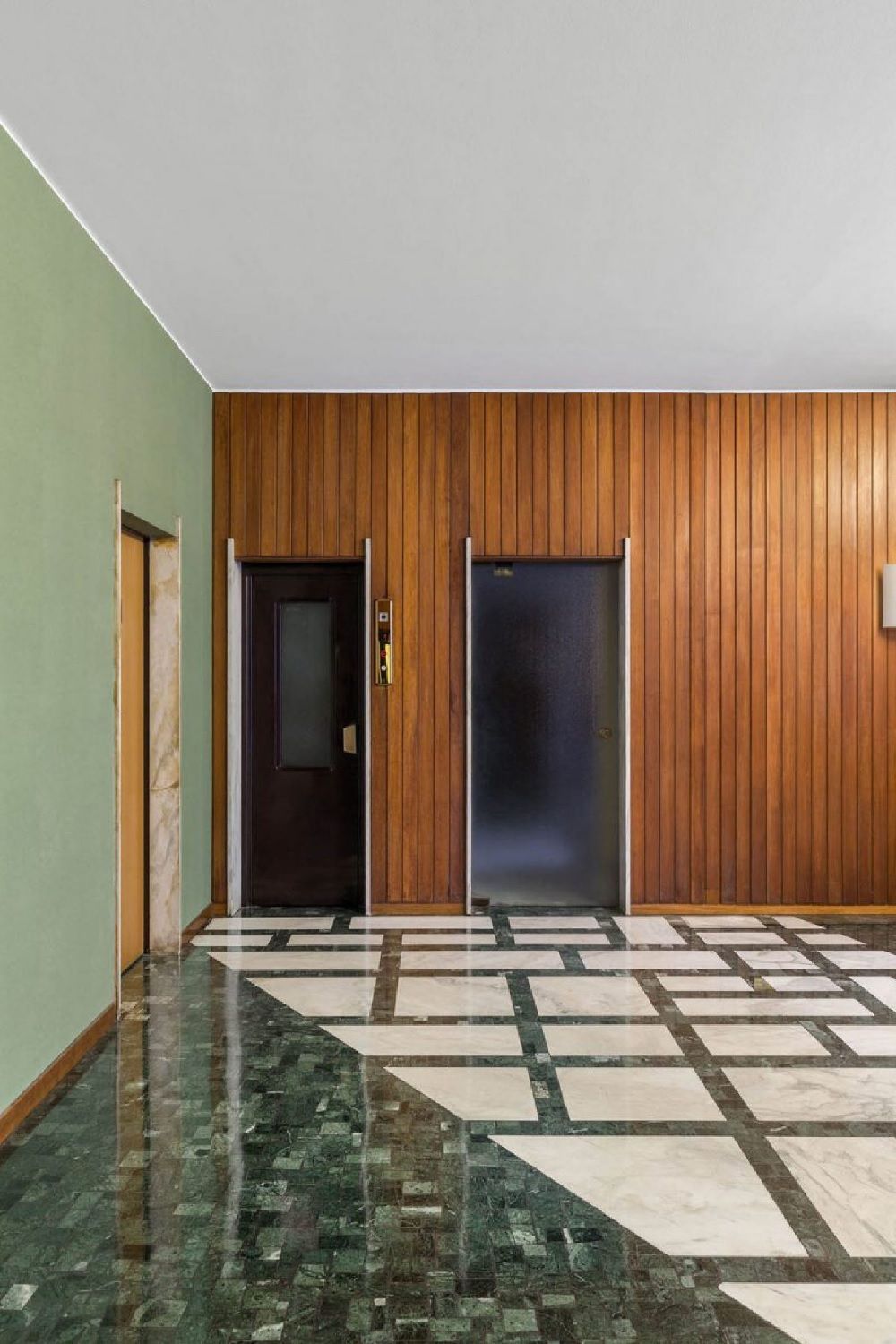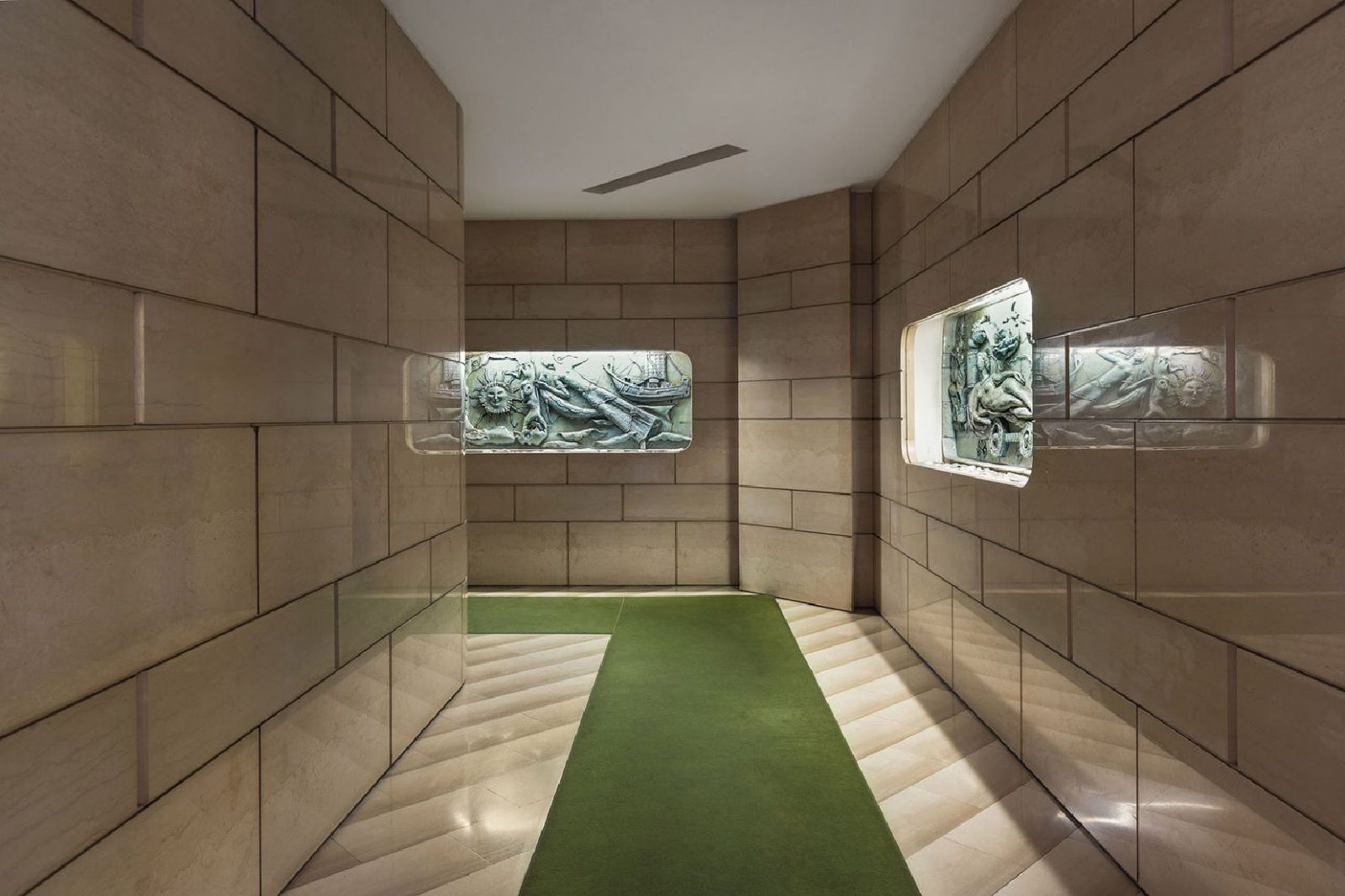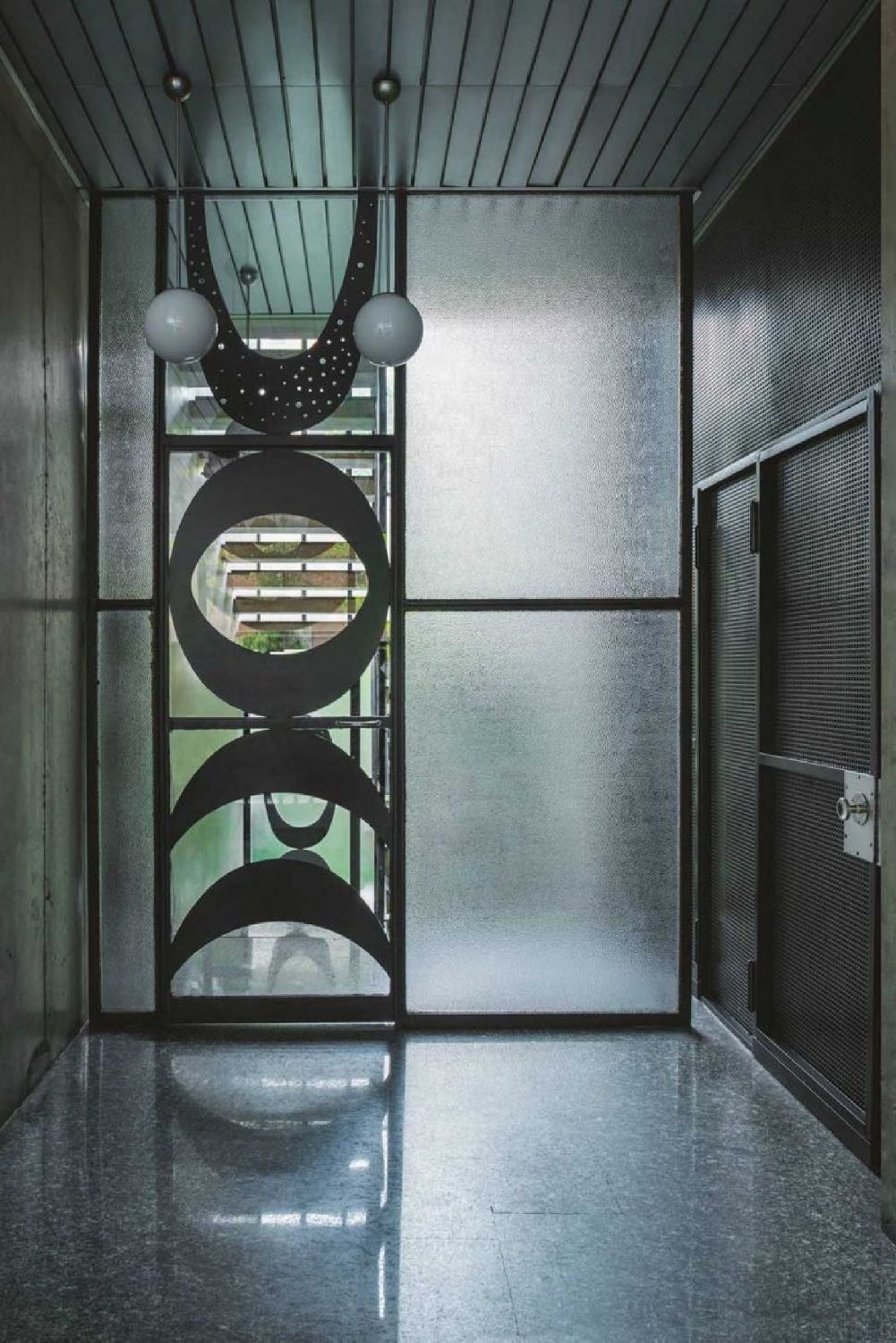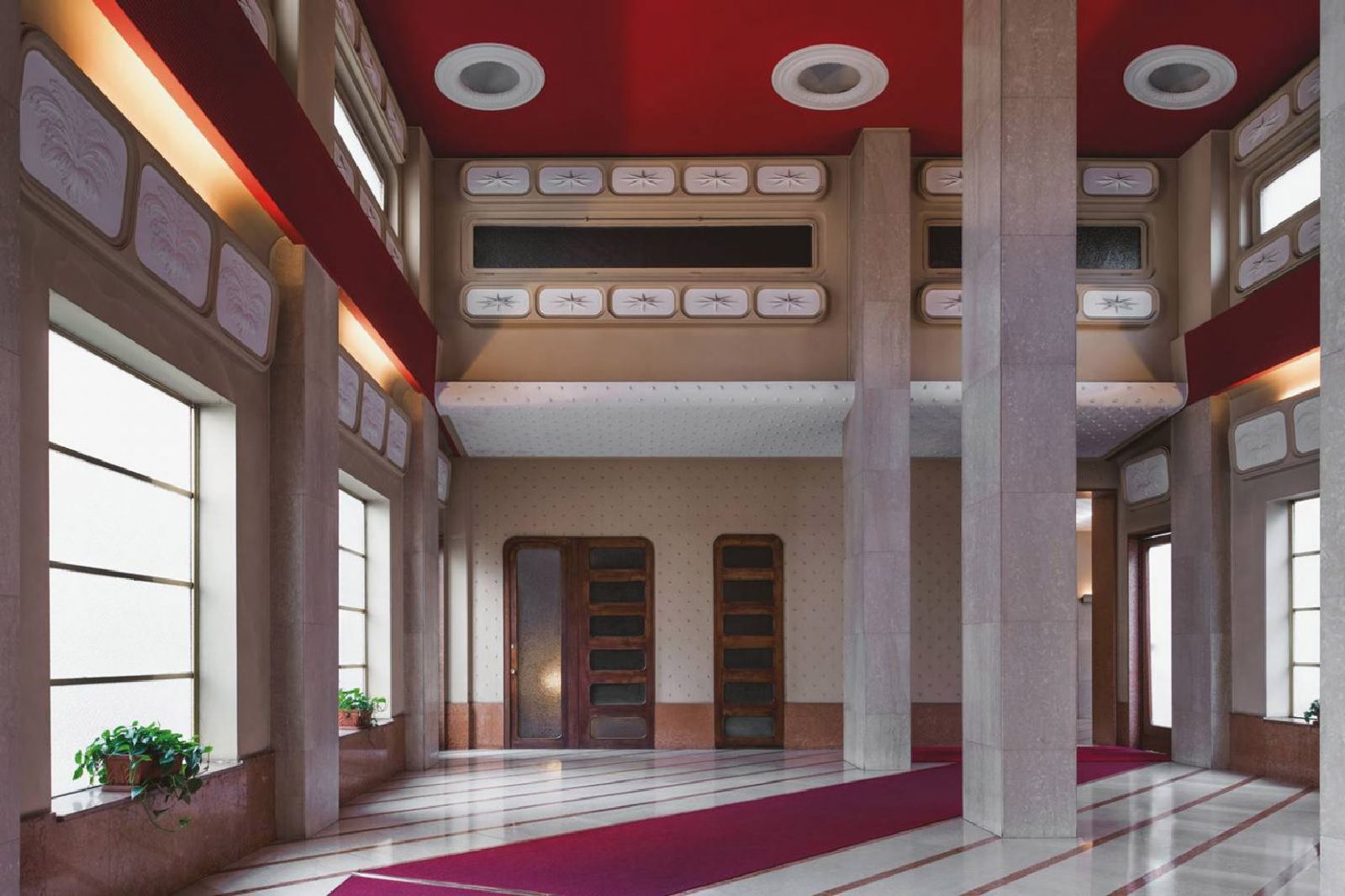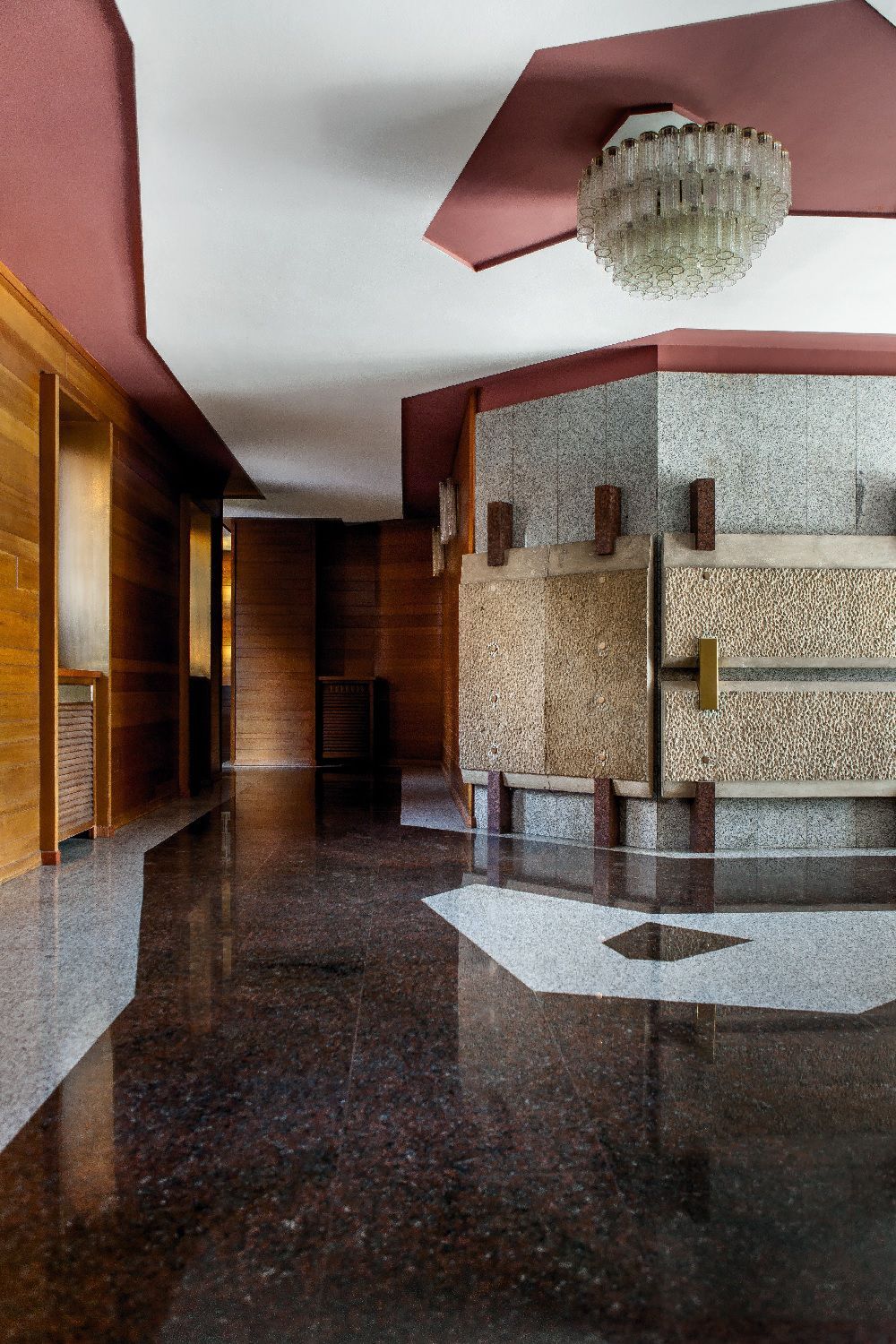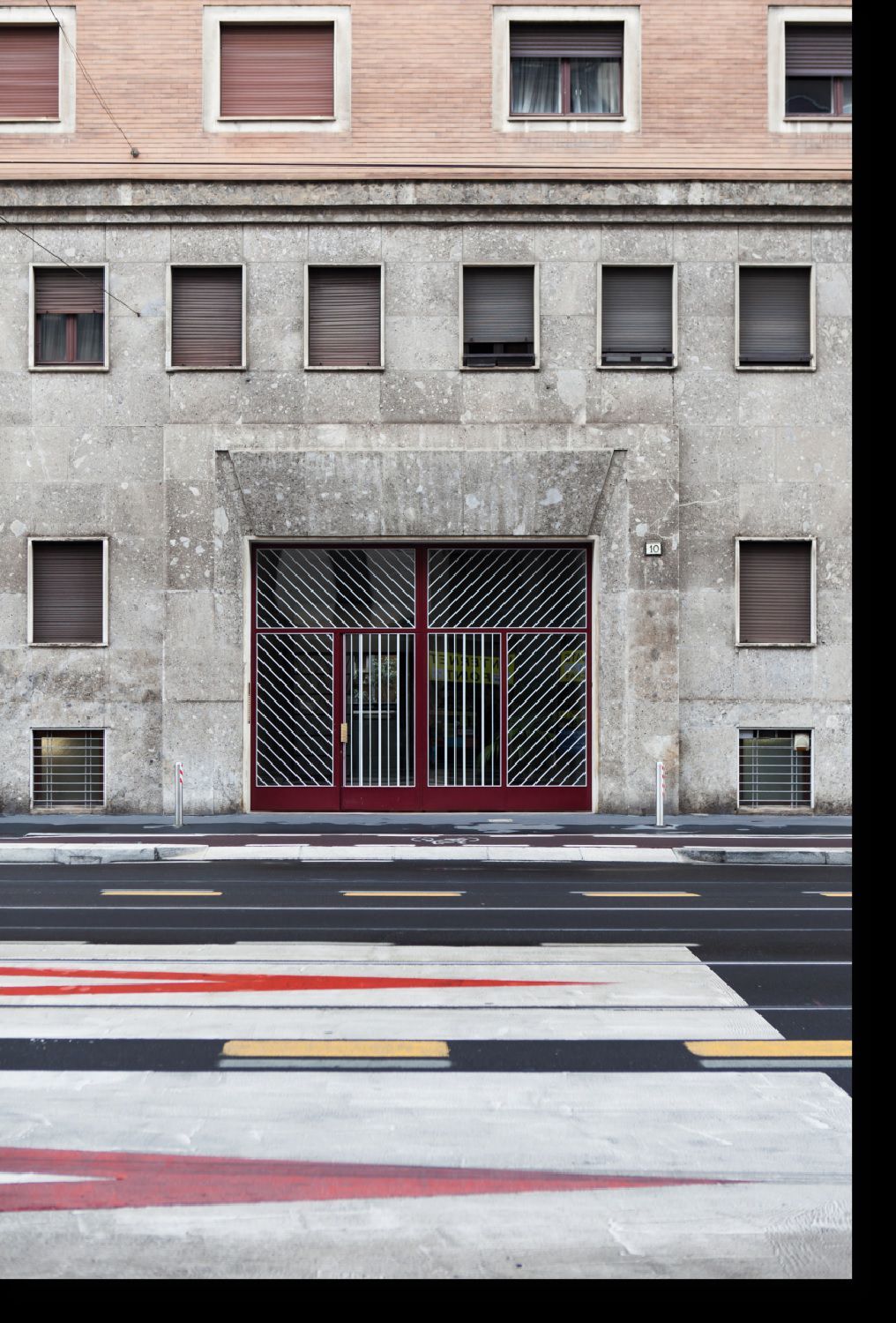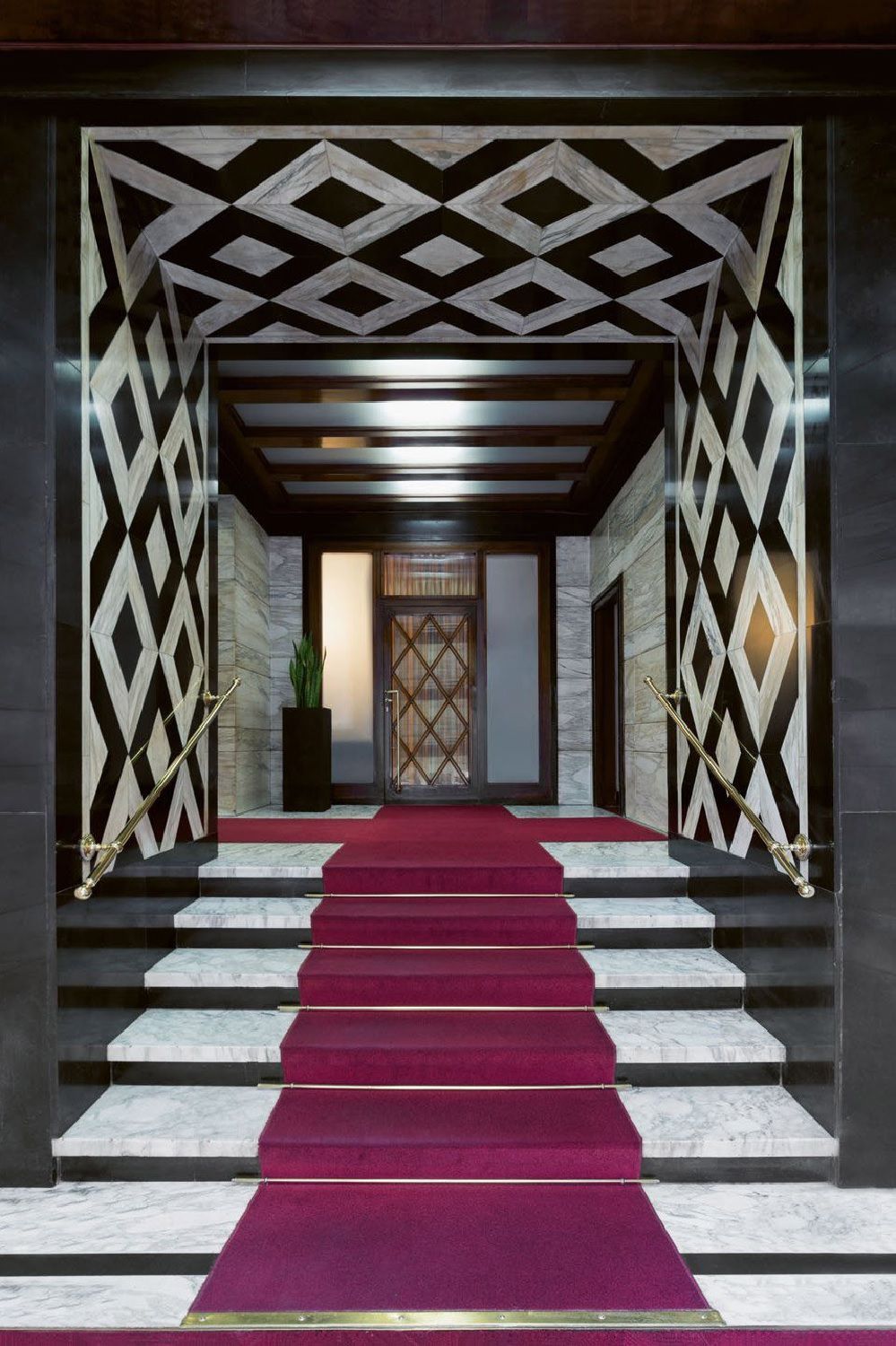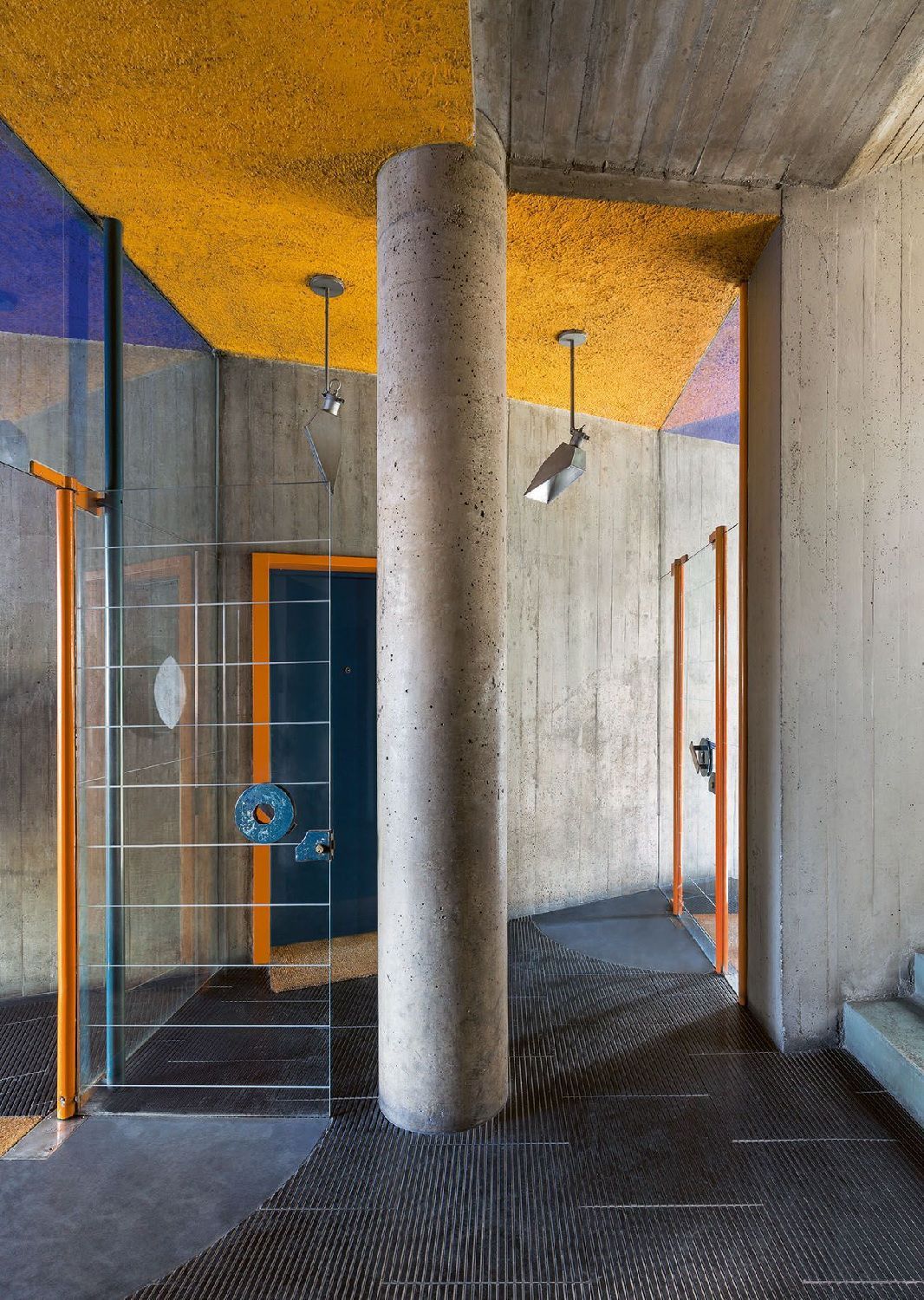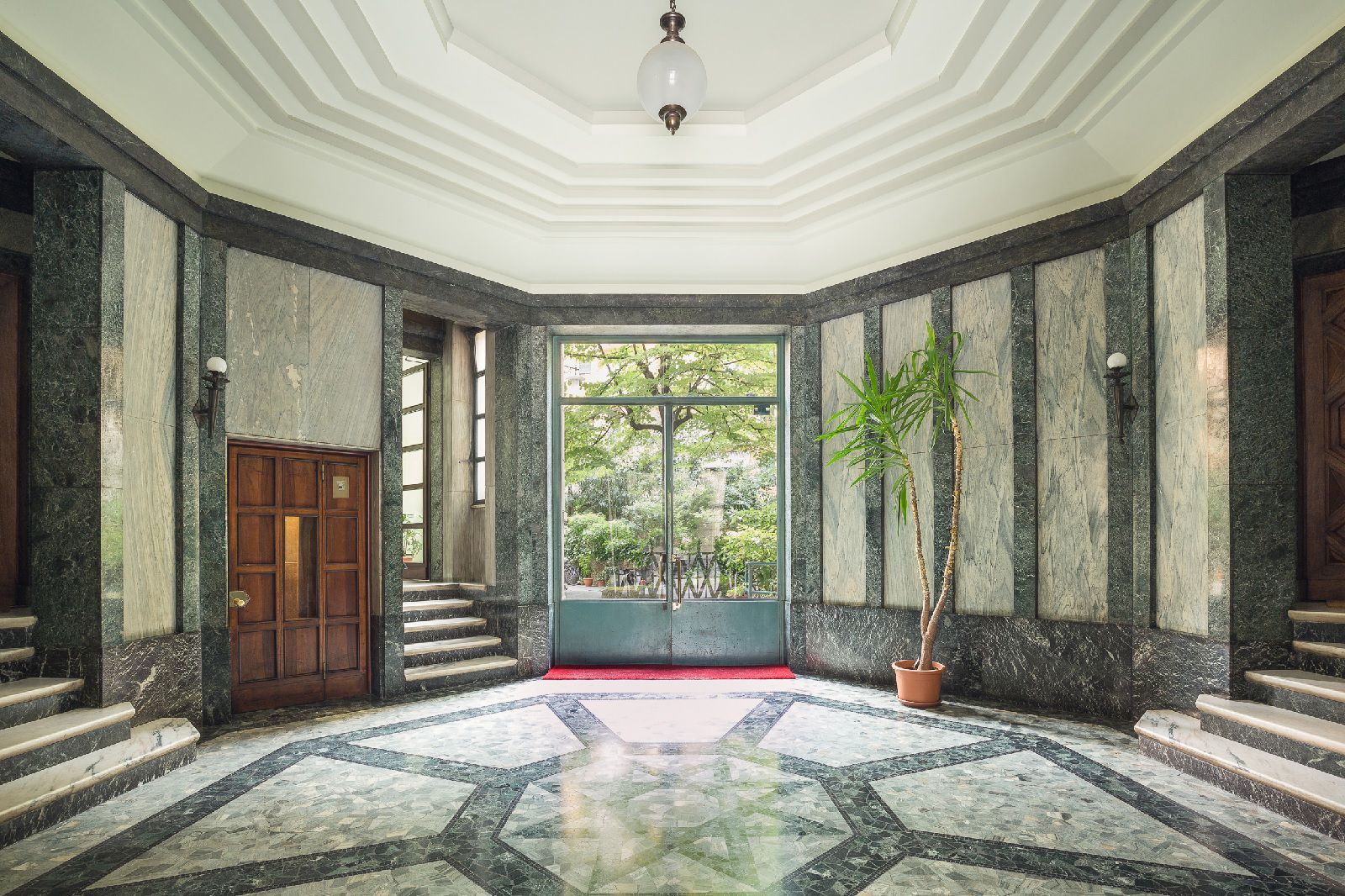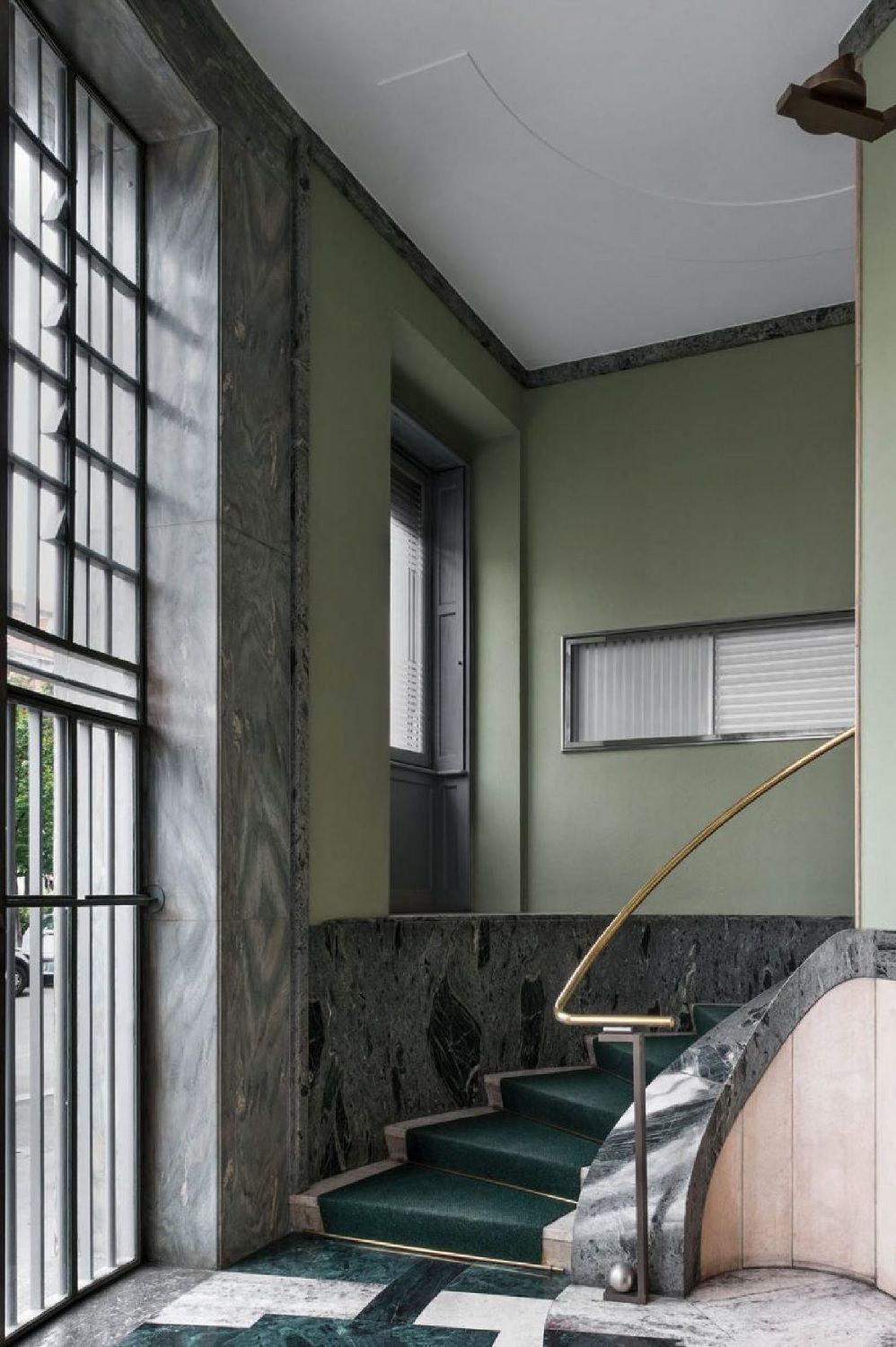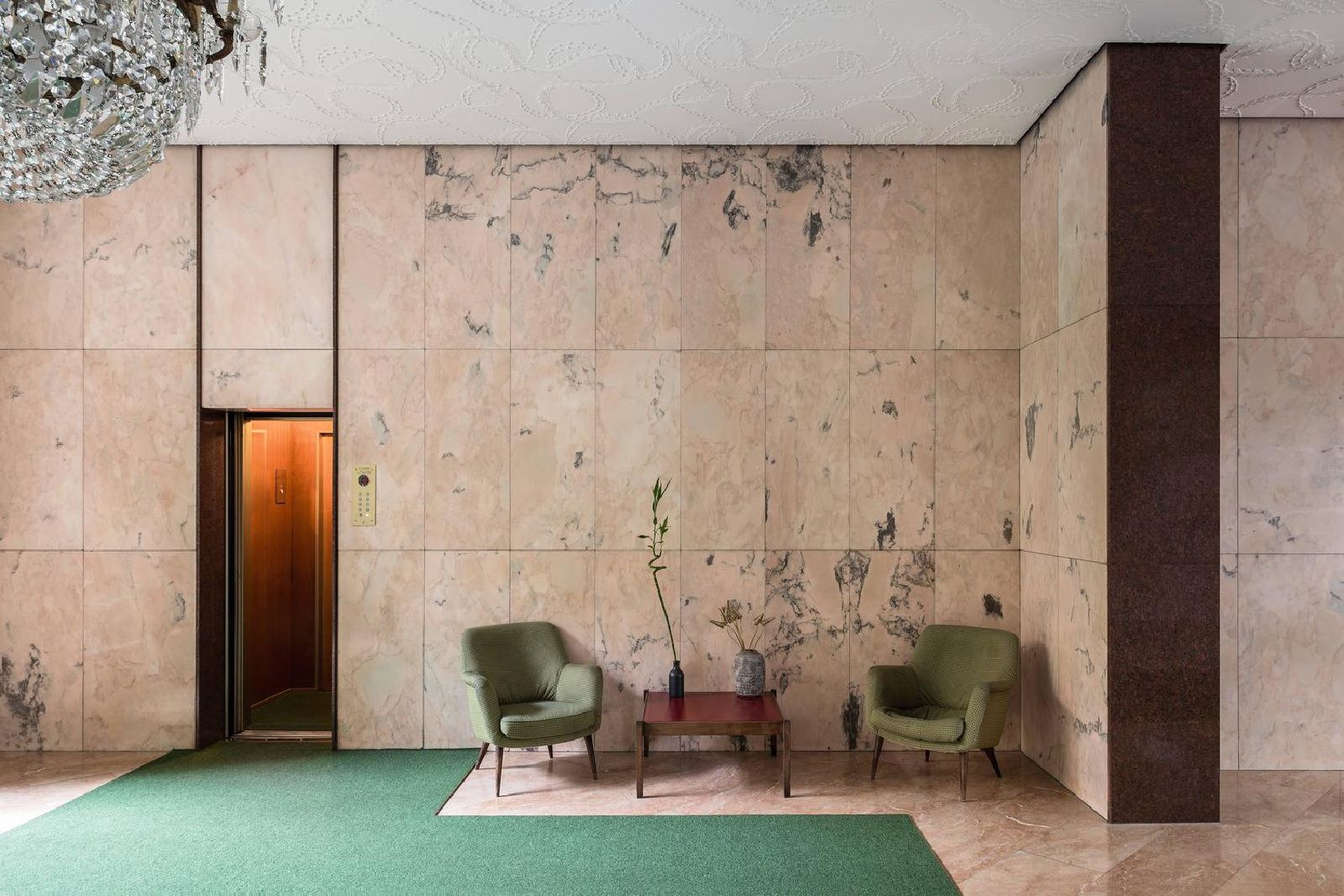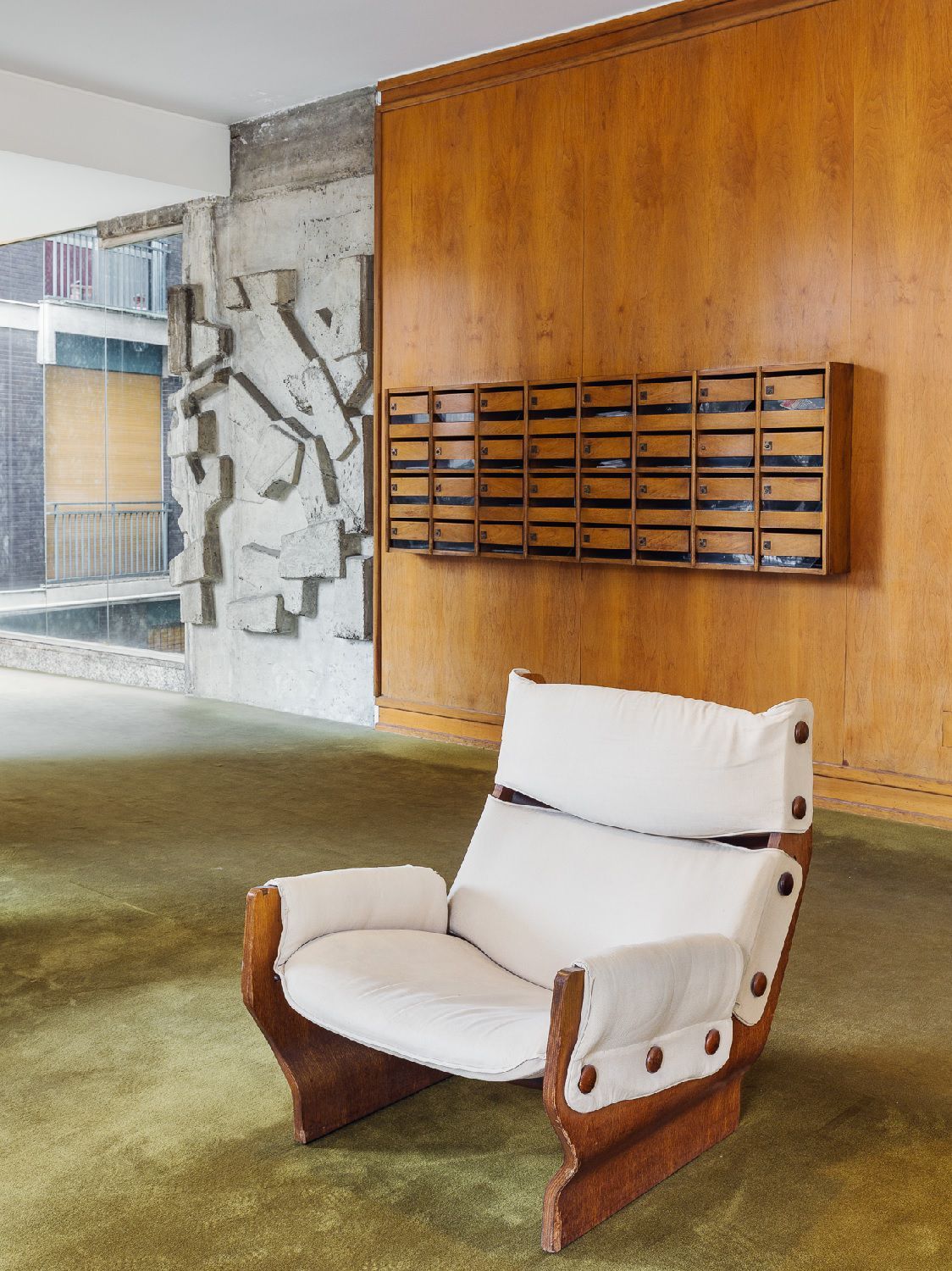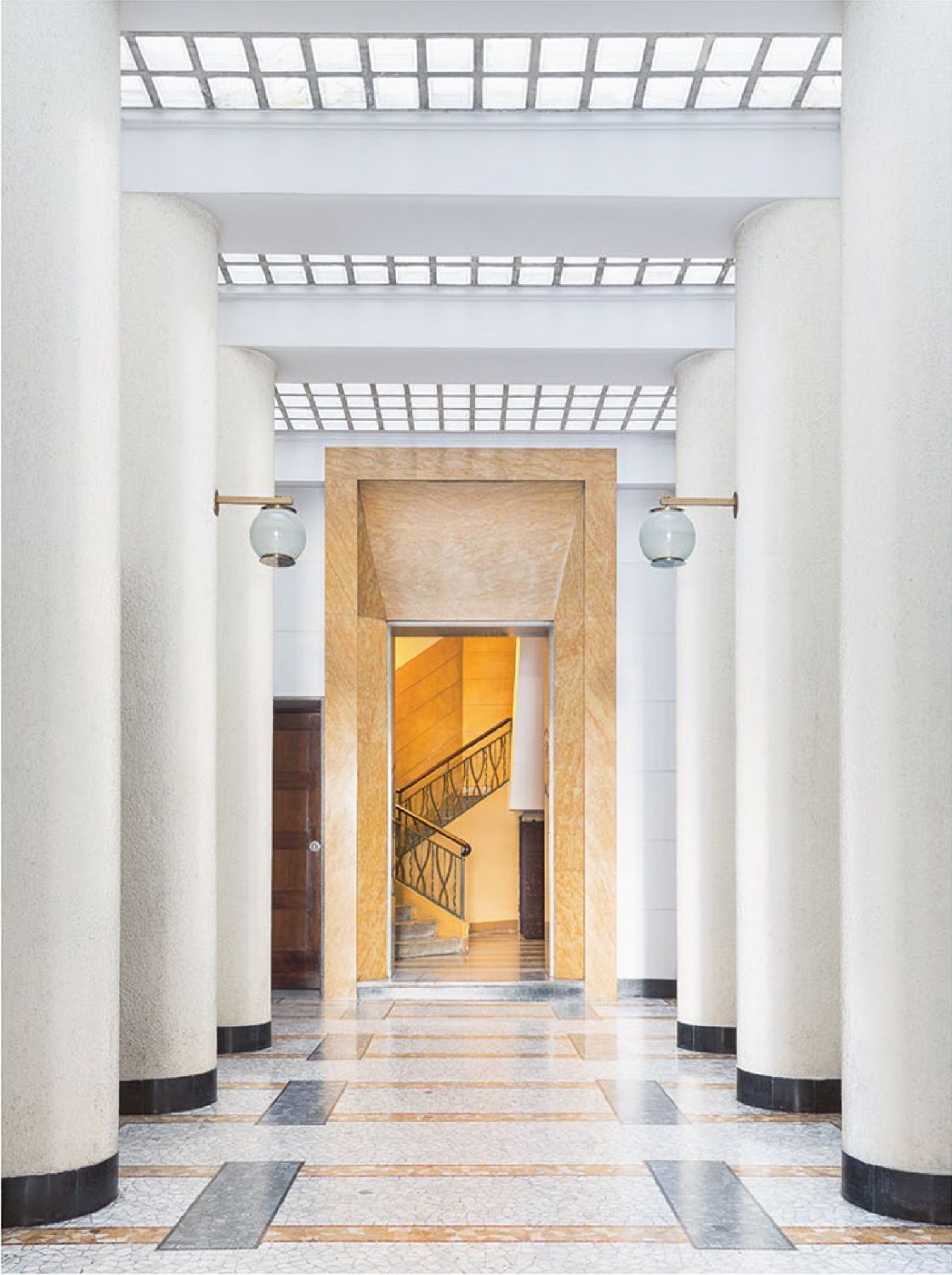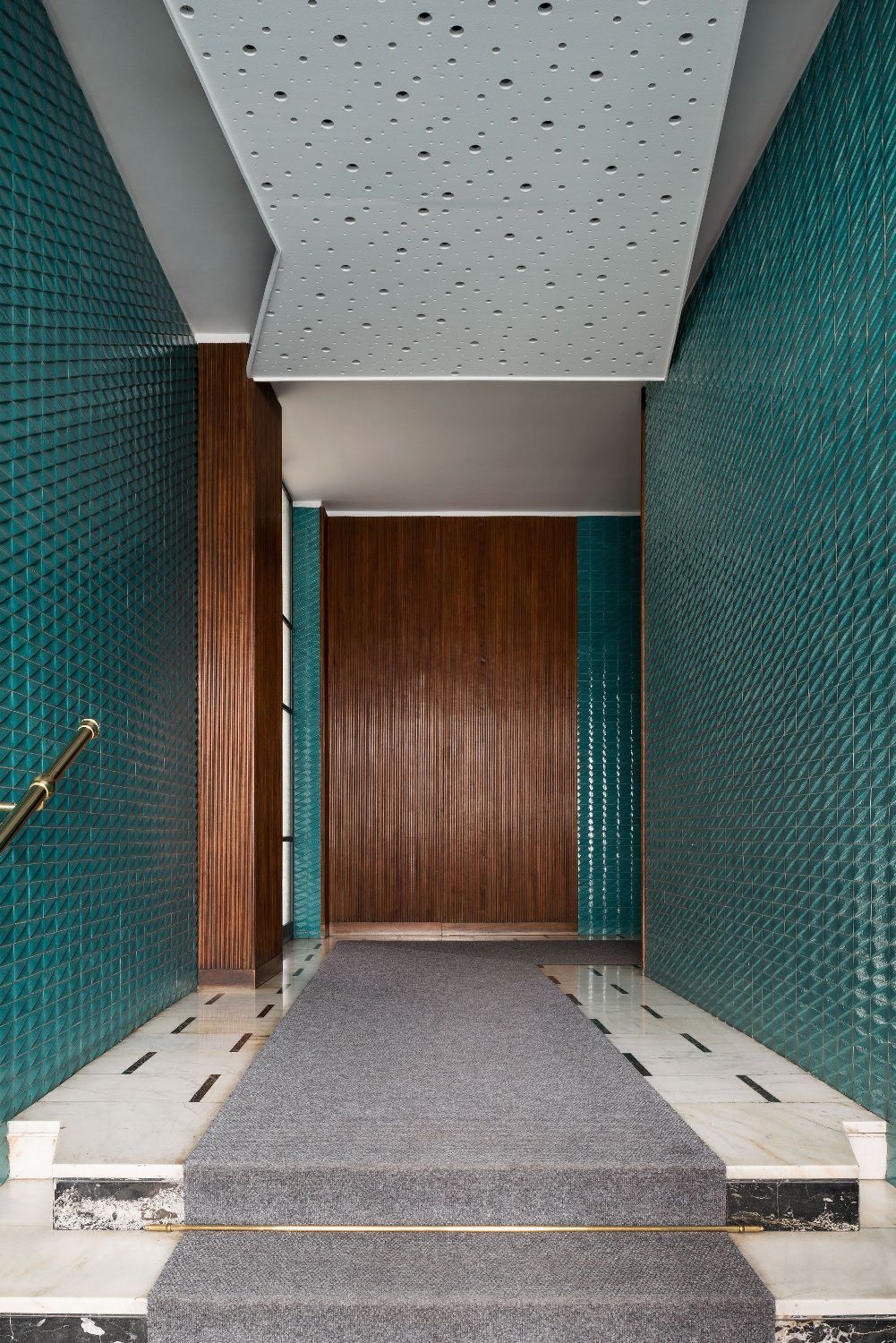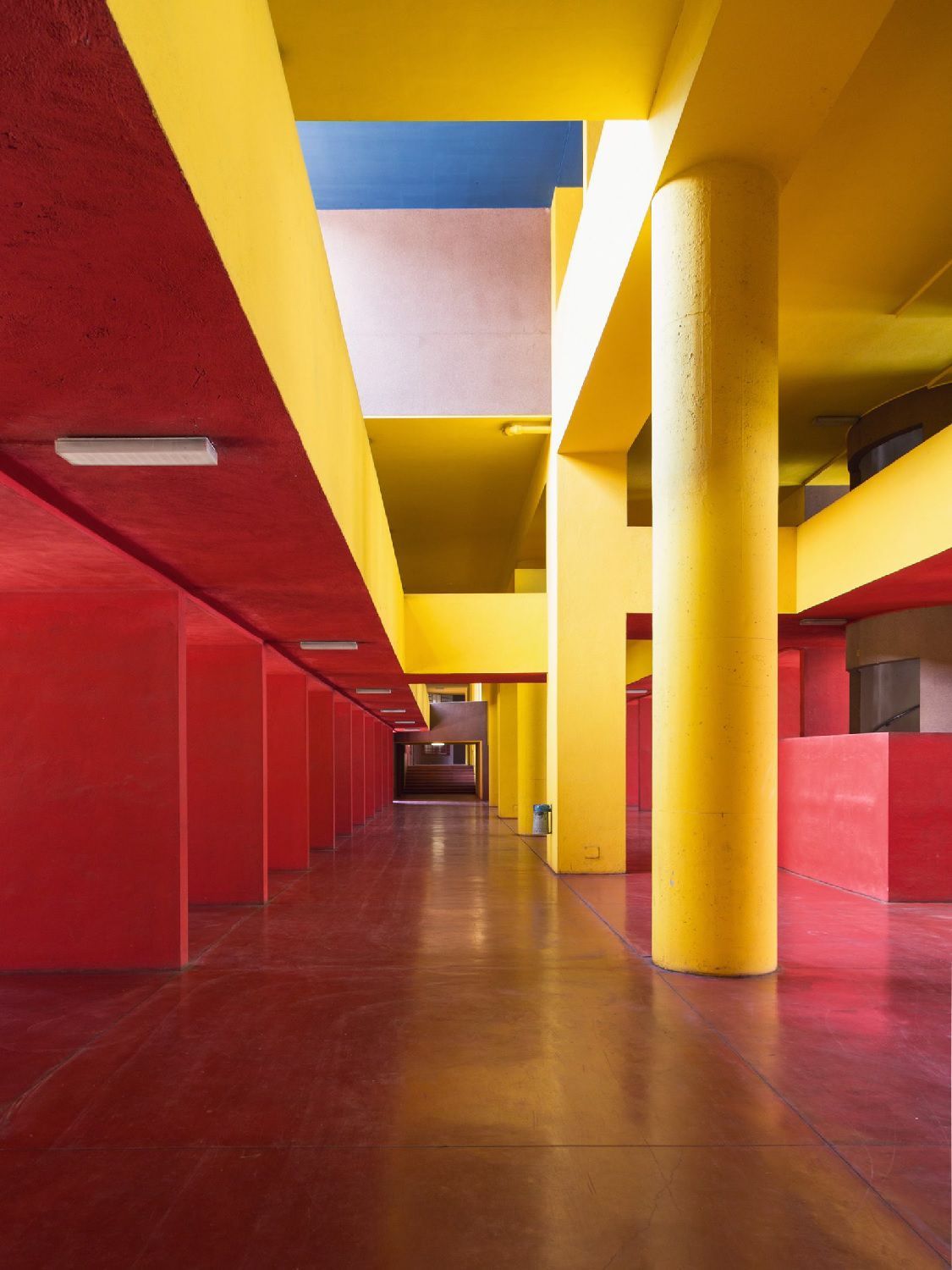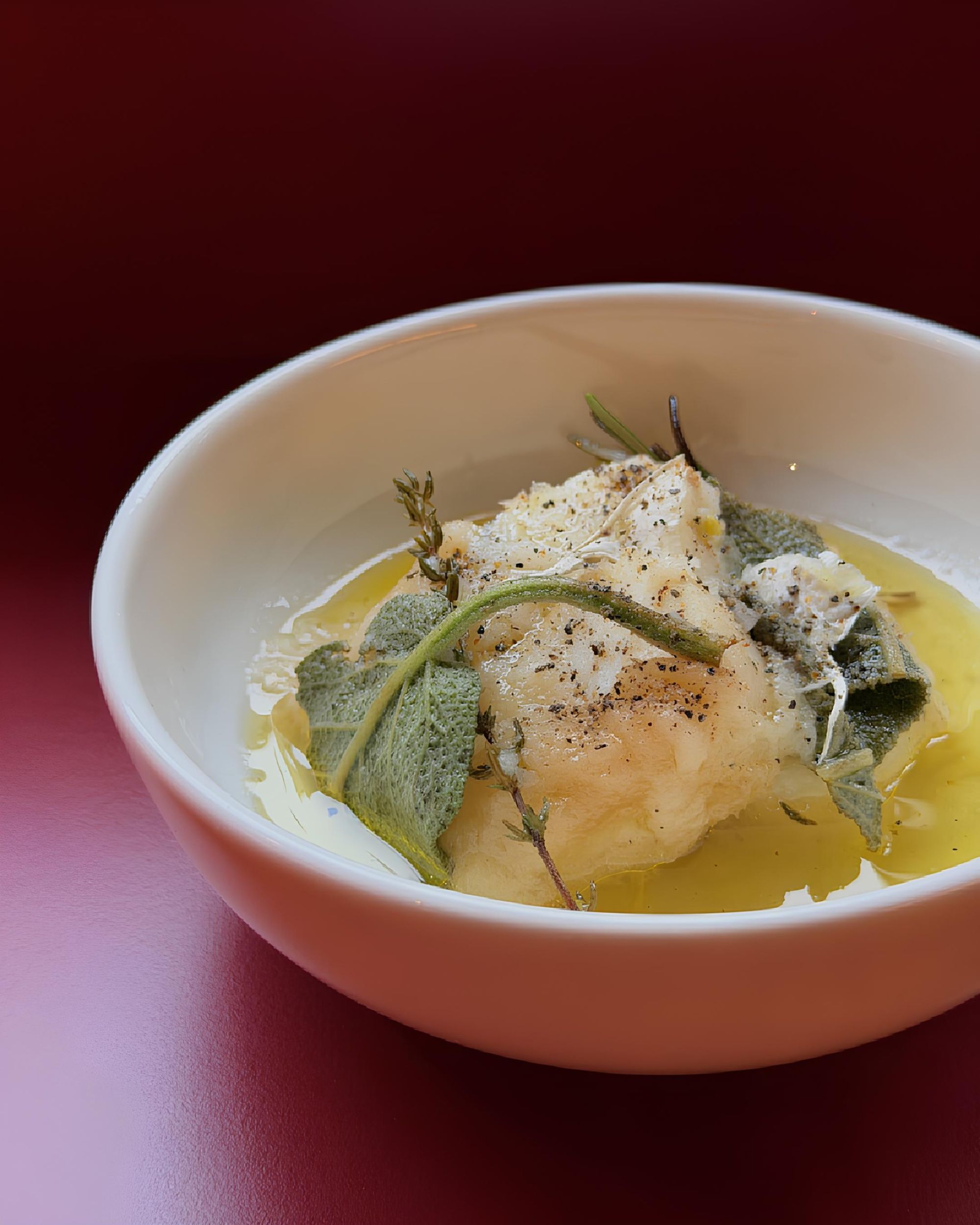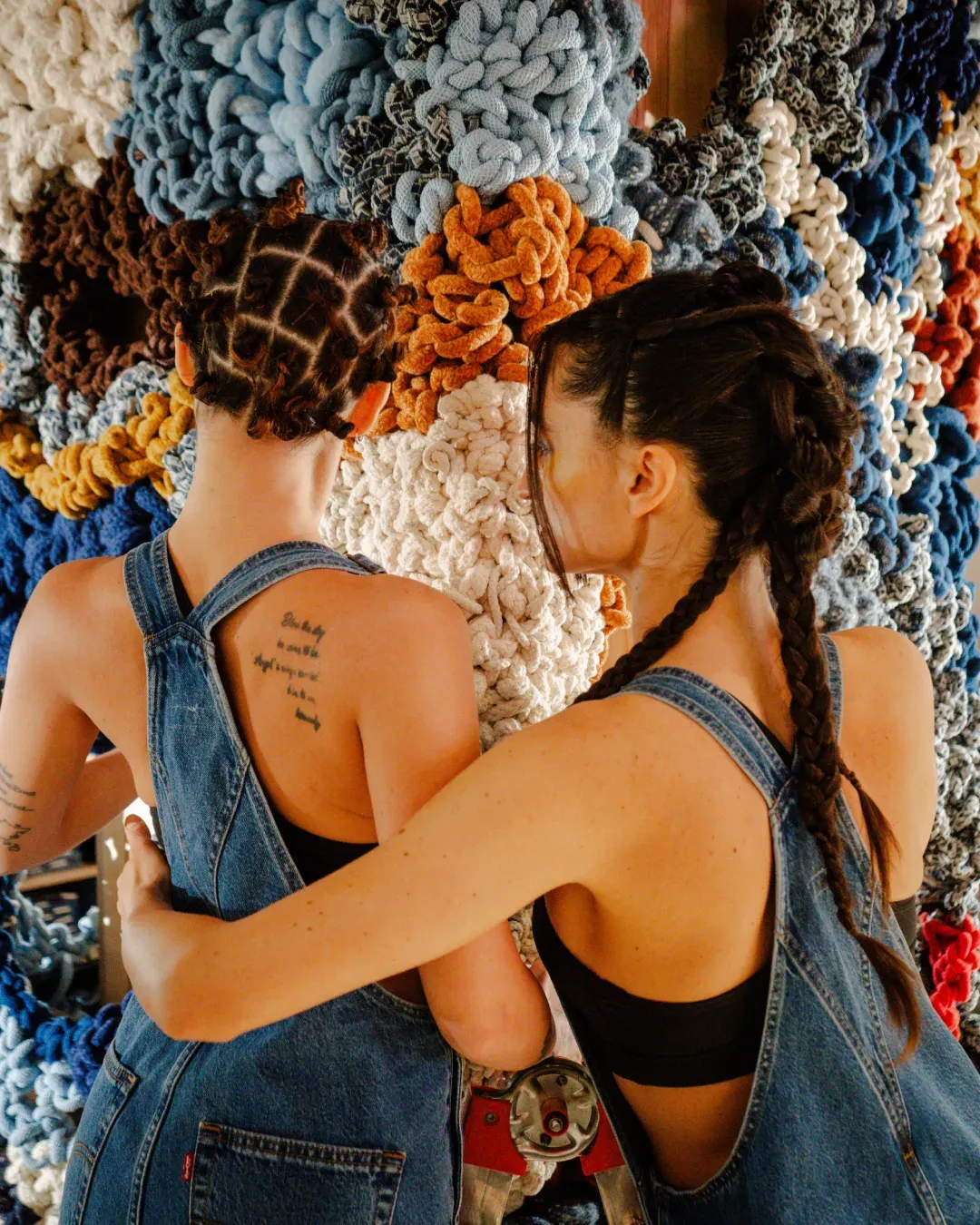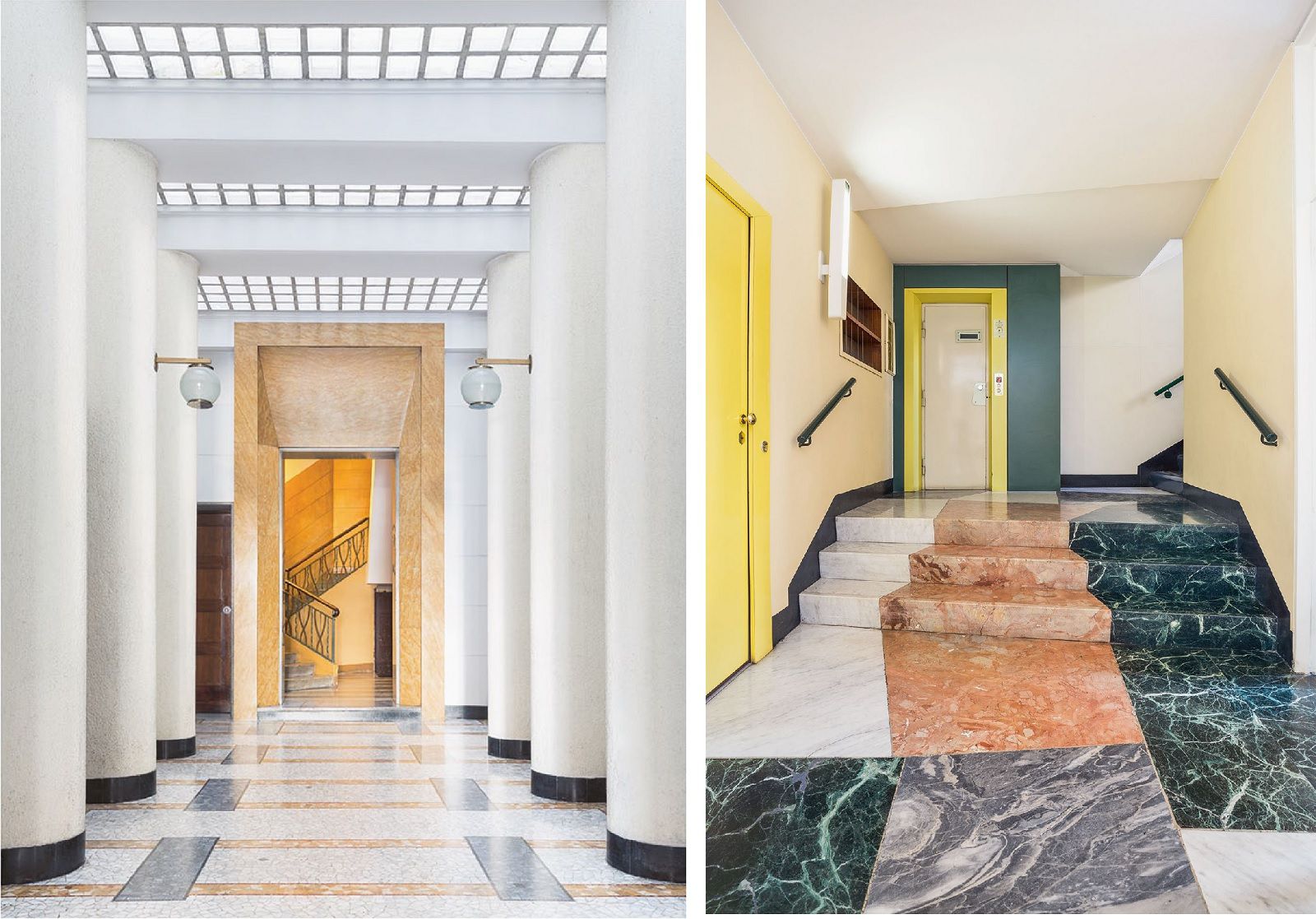
The secret of Milan's entrances The hidden beauty of the city, poised between design and architecture
To get lost. Forget the goal and follow the trail of a scent, a sound coming from afar, a cat that walks, a girl in a red coat. Walking and letting yourself be guided by the sound of your steps, by the alleys, by their flowing and intertwining. This is the best way to explore any city, even Milan. Our suggestion is the same: take advantage of these days of fashion week, while running from one show to another, to look around, to browse around, maybe to sneak into one of the many Milanese buildings. Here, sheltered by thick gates, camouflaged behind anonymous facades are the city's best hidden secrets: the hallways.
These border spaces that someone has defined as "a social microcosm that is halfway between the intimacy of one's own home and the strangeness of the road" are the lesser reflection of the discreet charm of Milan. This is well told by Entryways of Milan, published by Taschen and edited by Karl Kolbitz, model of Prada, and former assistant to Wolfgang Tillmanns and Mario Testino who brings together in an unprecedented photographic journey 144 of the most interesting entrances (of buildings built between 1920 and 1970) of the Lombard capital, told by 278 shots by Matthew Billings, Delfino Sisto Legnani and Paola Pansini.
The beautiful images depict a story made of gates, handles, handrails, stones, floors, chandeliers, carpets, doorways and letterboxes. These are often undervalued places, but for designers, architects and artists they represent authentic gyms of experimentation, a free space to express themselves beyond limits and rules. This is what Giovanni Muzio, Piero Portaluppi, Luigi Caccia Dominioni, Giuseppe Martinenghi, Giuseppe Terragni, Giò Ponti, Asnago and all the other creatives who have worked on the construction of the many Milan entrances, hybridizing the classical heritage with the most artistic influences rooted in the culture of the city, those of the 1920s, from Futurism to the works of de Chirico, Sironi or Carrà. Each entrance is an exercise in style, a game of aesthetics, functionality and unexpected details, such as an elegant bas-relief, a trompe-l'oeil of the 30s, a pillar covered in mosaic or a chair with modernist lines. These beautiful hidden worlds not reserved only for residents, the Milanese, but there for anyone who wants to venture out to discover them.









































